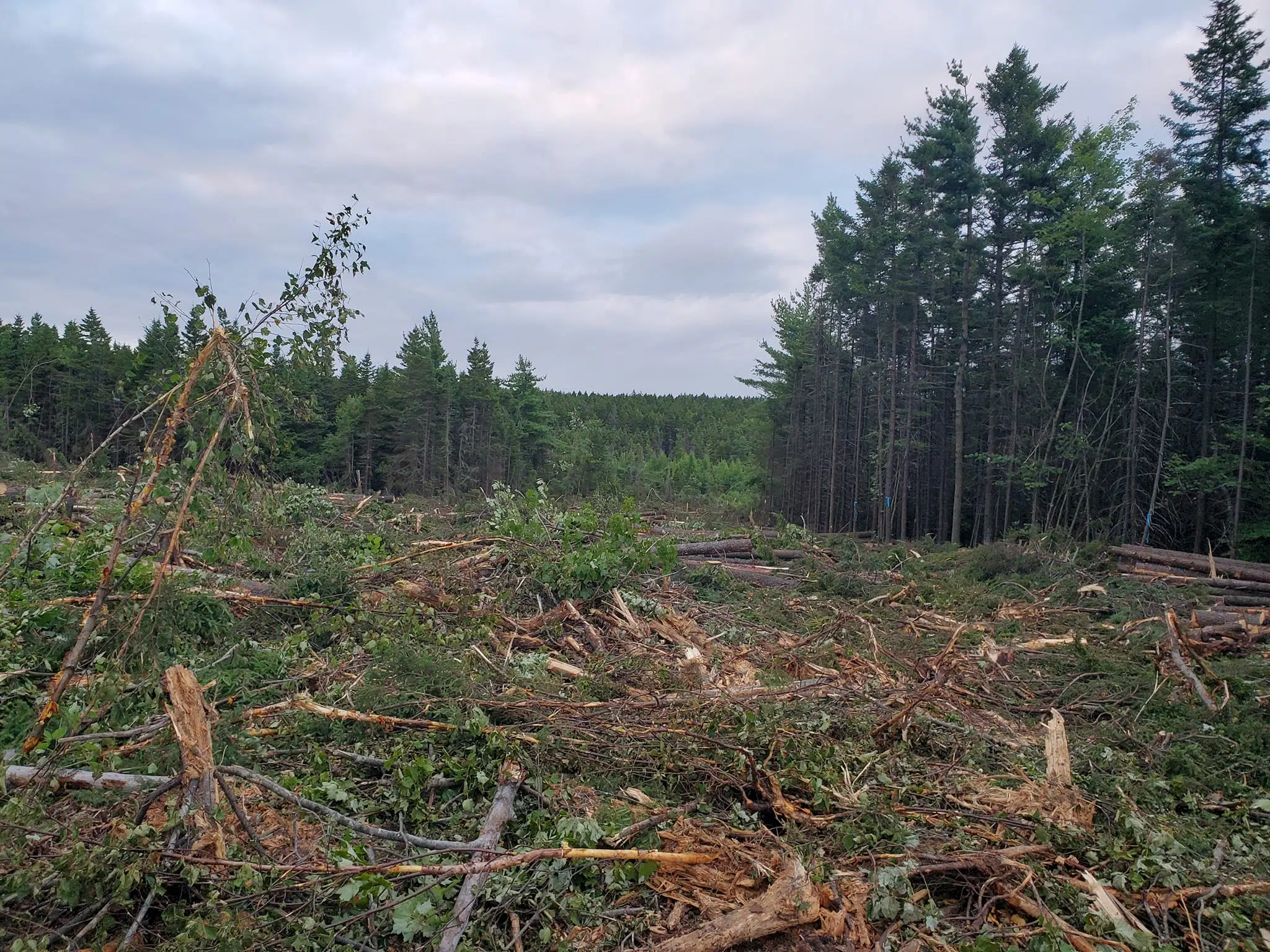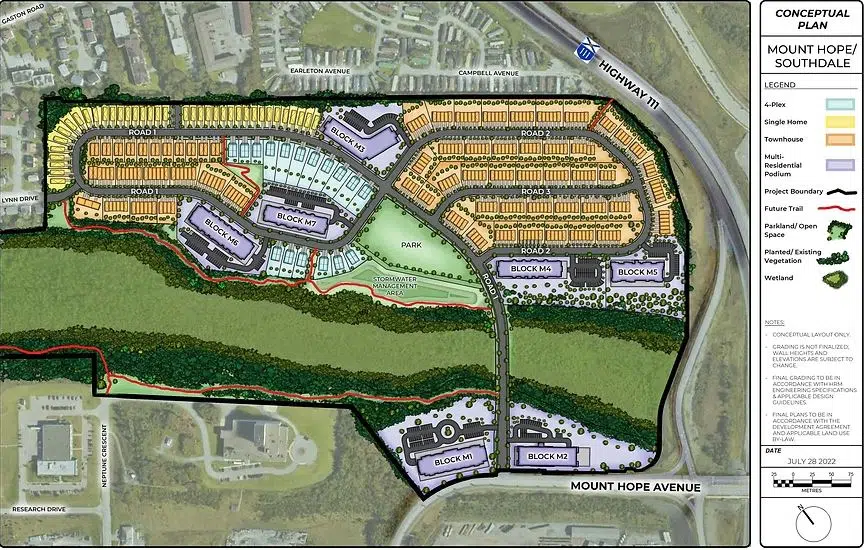
Clear cutting is already underway at the site of the future Mount Hope Village. Photo: Wayde Hazelwood
A Dartmouth councillor says the province has left people with no other option than to take direct action against a future development near Eisner Cove Wetland by not hosting public consultation.
“The province basically has turned it into a binary choice of protest or give up because you have no prospect of influencing the process through the usual public engagement that would happen” said Councillor for Dartmouth Centre, Sam Austin.
The site, officially called the Southdale – Mount Hope Special Planning Area, is located next to Highway 111 near the top of Mount Hope Avenue. Clayton Developments Limited and A.J. Legrow Holdings, have proposed 1200 homes be built on the 45-hectare piece of land.
While development of the land would normally be under jurisdiction of the municipality, the province designated Southdale/Mount Hope as one of nine special planning areas in March. That means Housing Minister John Lohr can fast-track development on the site, without the usual public consultation process. It’s an attempt to get new units on the market, as the province grapples with a housing crisis.

Mount Hope Village plan. Photo: Clayton Developments Limited/HRM
Despite the project not being approved yet, Minister Lohr approved a request from Clayton Developments and A.J. Legrow Holdings to “enable early tree removal and earthworks” at the Southdale – Mount Hope Special Planning Area in July.
Four people were arrested at the site on Sept. 6 while blocking access for tree-clearing machinery. Protestors are concerned the development threatens the health of the wetland and the species living there.
Austin said members of council urged the province to do more public consultation than the one session that had been done by the municipality in February, prior to the province taking jurisdiction over the parcel of land.
“The mayor, the CEO, myself, we all went down to Law Amendments to plead with the province to if you’re going to do this darn silly thing of interfering in our jurisdiction, don’t do it by cutting out the public,” said Austin. “Because we were worried from the get go that the public would be sidelined and removed from the decision making process.”
The municipality did launch an online questionnaire about the development of the site, which closed on Sept. 19, but Austin said there’s no way to know how the province will use that information.
“Frankly, I think [it came] from a place of our planning department being not comfortable proceeding without any of the usual public engagement that would happen with this. Whether or not the taskforce takes any of that feedback into consideration, no one’s going to know.”
The municipality was allowed to appoint two municipal planners to the task force making recommendations to the province on the development, but Austin said, they had to sign non-disclosure agreements and can’t share anything from those meetings with council.
In an email to our newsroom, a communications advisor for the Department of Municipal Affairs and Housing wrote: “Feedback received through this process will be reviewed and considered by HRM planning staff when finalizing the proposed planning documents and the information shared with the HRM Housing Task Force. When decisions are required, the Minister of Municipal Affairs and Housing will consider recommendations brought forward by the HRM Housing Task Force.”
“This whole thing is, as far as I’m concerned, a direct result of the province backing everybody into a corner,” Austin said.





Comments